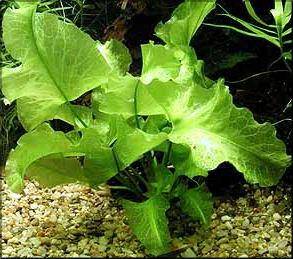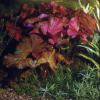Nuphar japonicum
Scientific name: Nuphar japonicum
Family: Nymphaecaceae
Maximum size reached under cultivation: 40 - 60 cm (15.75 - 23.62 inch)
014
Recommended pH range: 6.5 - 7.5
Recommended water hardness: 4 - 12°dGH (71.43 - 214.29ppm)
0°C 32°F30°C 86°F
Recommended temperature range: 15 - 25 °C (59 - 77°F)
Preferred propagation method: Rhizome
Native to: East Asia
Growth rate: Slow
Recommended substrate: Fine gravel
Lighting requirements: Bright
Ideal placement in tank: Background
Family
Nymphaeaceae
Common Name
Spatterdock, Japanese Spatterdock
Origin
East Asia – primarily Japan, Korea, and parts of China.
Propagation
This plant reproduces both by seeds and vegetatively through rhizome division. In aquariums or paludariums, the easiest method is dividing the thick rhizome into sections with healthy leaves and roots. Seed propagation is possible if the plant is allowed to flower above the water surface and the flowers are manually pollinated.
Difficulty
Medium
Short Description
Nuphar japonicum is a marsh and marginal plant that can also be grown in aquariums with open tops or in paludariums. It features broad, waxy, heart- or arrow-shaped leaves that float on or emerge above the surface. Under suitable conditions, it produces bright yellow, cup-shaped flowers. While it can adapt to submerged life for short periods, it thrives best with part of the plant exposed to air. Avoid fully burying the rhizome, as it may rot.
Tank Placement
Best used as a background or marginal plant in large aquariums, or as a centerpiece in a paludarium setup. Leave room for floating leaves to spread and ensure bright lighting.
FAQs
-
Can Nuphar japonicum be fully submerged?
Only temporarily. While the plant can adapt for a short time, it grows best when allowed to send leaves to the surface or grown as a marginal/paludarium plant.
-
How do I prevent the rhizome from rotting?
Plant the rhizome partially above the substrate, with the crown exposed. Do not fully bury it, and use nutrient-rich, well-drained substrate.
-
What kind of lighting does this plant need?
Bright lighting is essential for healthy leaf development and potential flowering. It can tolerate medium light but growth will slow significantly.
-
Can it flower in an aquarium?
Yes, if the plant has access to open air and strong lighting. It produces small yellow flowers above the waterline.
-
Tips for pond or paludarium growth?
Provide shallow water (10–30 cm), nutrient-rich substrate, and access to air. This setup mimics its natural environment and supports robust flowering and growth.

 Barclaya longifolia
Barclaya longifolia Nymphaea lotus
Nymphaea lotus Nymphaea maculata
Nymphaea maculata Nymphaea pubescens
Nymphaea pubescens Nymphaea zenkeri
Nymphaea zenkeri